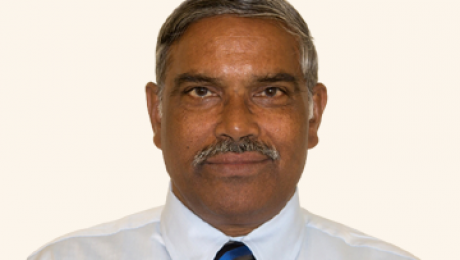DRDO Chairman Dr Satheesh Reddy meets the leaders of SRM University-AP
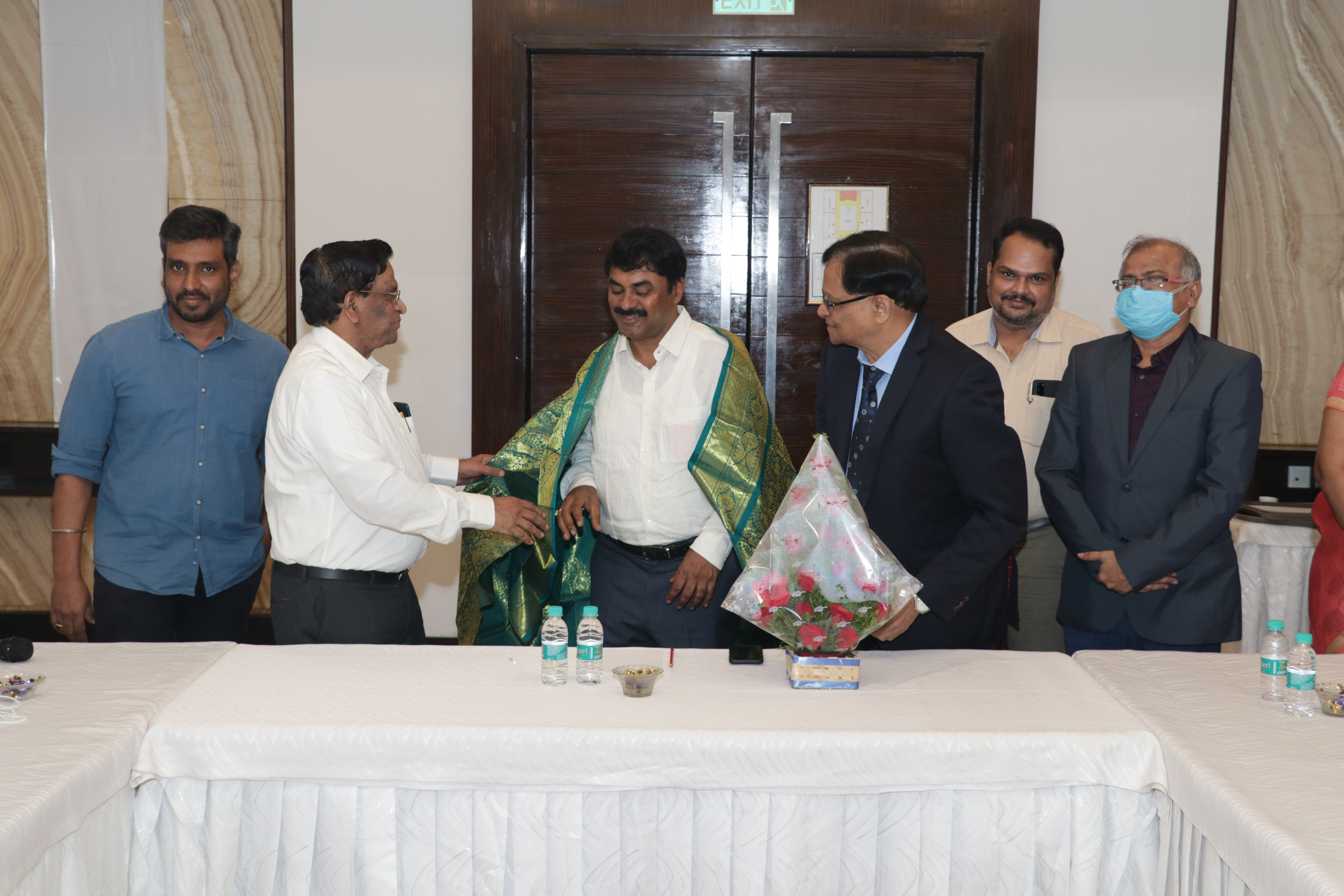 Dr G. Satheesh Reddy, Chairman, DRDO had an interactive meeting with the leaders of SRM University-AP on July 25, 2021. Prof V.S. Rao, Vice-Chancellor and Prof D. Narayana Rao, Pro-Vice-Chancellor of SRM University-AP felicitated Dr Satheesh Reddy for his glorious technological contributions to India.
Dr G. Satheesh Reddy, Chairman, DRDO had an interactive meeting with the leaders of SRM University-AP on July 25, 2021. Prof V.S. Rao, Vice-Chancellor and Prof D. Narayana Rao, Pro-Vice-Chancellor of SRM University-AP felicitated Dr Satheesh Reddy for his glorious technological contributions to India.
Prof Ranjit Thapa from the Department of Physics made a presentation on the Computational Materials Genome project to Dr Satheesh Reddy. He emphasized the importance and significance of the Computational Materials Genome project and how it is useful to accelerate the design, development, discovery of new functional materials many times and at a minimal cost compared to the existing traditional methods. During his presentation, he explained the development of catalysts using QM/ML approaches, the development of explosophores, and computational fluid dynamics on external aerodynamics on Earth and Mars. Dr Satheesh Reddy was impressed with the presentation and suggested contacting DRDO-Young Scientist Laboratory related to Smart Materials in Hyderabad for experimental collaborations. He advised Dr Sathya Pramod to discuss computational models with the Scientists who are working on hypersonic wind tunnels deployed in DRDL, Hyderabad.
Prof Vinod Kumar presented a proposal on foams based on Aluminium and Magnesium. He explained the processing, structure, morphology, and applications of these metal forms. Dr Satheesh Reddy advised looking into titanium-based metal forms also. Later, Dr Jasvinder Singh presented his work on cardiovascular stents fabricated by solvent cast 3D printing. Dr Satheesh Reddy has shown keen interest and he has asked for a copy of the presentation and other details for further study.
Dr Satheesh Reddy assured collaboration with SRM University-AP on a few projects that are relevant to the needs of DRDO. He elaborated on the following initiatives of DRDO.
1. DRDO will fund the incubation centres which work on defence-related problems by freshly graduated BTech students with the financial assistance of up to Rs 1 crore. Further, if the fresh graduates come forward as industrial partners, DRDO could provide financial assistance of up to 10 Crores INR.
2. DRDO has also started joint PhD programmes with universities/institutions in India. DRDO scientists will act as co-guides and registered PhD students will get an opportunity to work in DRDO labs during the tenure.
3. DRDO has started MTech programmes in Defence Technologies jointly with the universities. In this programme, students will complete the course work in the university and in the second year, students can do their project work in the DRDO labs.
4. DRDO is also interested in supporting long-term projects with the Universities under the Directed Research programme which could be supported by DRDO for a long-term of two or three decades.
- Published in News
Dr Nimai Mishra’s research group studies new surface capping ligands
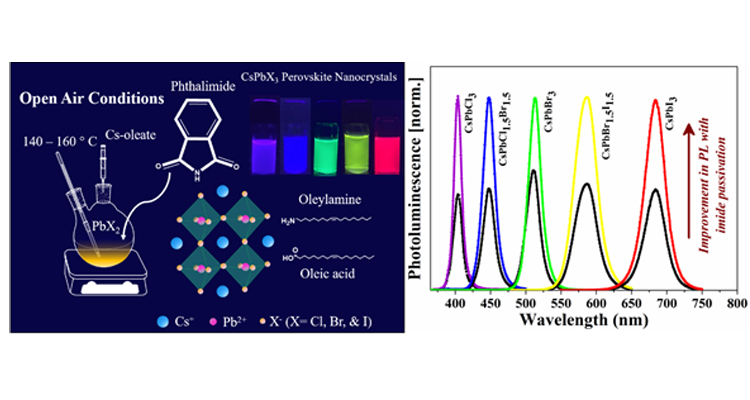 Dr Nimai Mishra, Assistant Professor, Department of Chemistry, SRM University-AP, Andhra Pradesh, along with his research group pursuing PhD under him-Ms V.G.Vasavi Dutt and Mr Syed Akhil- have published a research article titled “Enhancement of Photoluminescence and Stability of CsPbX3 (X= Cl, Br, and I) Perovskite Nanocrystals with Phthalimide Passivation” in the Journal “Nanoscale” (The Royal Society of Chemistry, Impact Factor-7.8).
Dr Nimai Mishra, Assistant Professor, Department of Chemistry, SRM University-AP, Andhra Pradesh, along with his research group pursuing PhD under him-Ms V.G.Vasavi Dutt and Mr Syed Akhil- have published a research article titled “Enhancement of Photoluminescence and Stability of CsPbX3 (X= Cl, Br, and I) Perovskite Nanocrystals with Phthalimide Passivation” in the Journal “Nanoscale” (The Royal Society of Chemistry, Impact Factor-7.8).
Caesium lead halide perovskite nanocrystals (CsPbX3 NCs) have been the flourishing area of research in the field of photovoltaic and optoelectronic applications because of their excellent optical and electronic properties. However, they suffer from low stability and deterioration of photoluminescence (PL) properties post-synthesis. One of the ways to minimize the surface defects in the surface treatment with suitable ligands is to achieve the NCs with superior PL properties for light-emitting applications.
In this article, Dr Mishra’s research group demonstrates that incorporating an additional ligand can further enhance the optical properties and stability of NCs. Here, we introduced phthalimide as a new surface passivation ligand into the oleic acid/oleylamine system in situ to get near-unity photoluminescence quantum yield (PLQY) of CsPbBr3 and CsPbI3 perovskite NCs. We observed, phthalimide passivation dramatically improves the stability of CsPbCl3, CsPbBr3, and CsPbI3 NCs under ambient light and UV light. The PL intensity is recorded for one year which showed a dramatic improvement for CsPbBr3 NCs. Nearly 11% of PL can be retained even after one year for phthalimide passivated samples, on the other hand, the PL of as-synthesized NCs completely diminishes in four months. CsPbCl3 NCs exhibit 3 times higher PL with phthalimide and retain 12% PL intensity even after two months while PL of as-synthesized NCs completely diminishes by then. Under continuous UV light illumination, the PL intensity of phthalimide passivated NCs is well preserved while the as-synthesized NCs exhibit negligible PL emission in 2 days. About 40% and 25% of initial PL is preserved for CsPbBr3 and CsPbCl3 NCs in the presence of phthalimide. CsPbI3 NCs with phthalimide exhibit PL even after 2 days while the PL is rapidly declined for as-synthesized NCs in the first 10 hours. The presence of phthalimide in CsPbI3 NCs could maintain stability even after a week while the as-synthesized NCs under transition to non-luminescent phase within 4 days.
Furthermore, blue, green, yellow, and red-emitting diodes by using CsPbCl1.5Br1.5, CsPbBr3, CsPbBr1.5I1.5, CsPbI3 NCs respectively are fabricated by drop-casting NCs onto blue LED lights which show the great potential of the use of these phthalimide passivated NCs in the field of display and light technologies.
Read the full paper here: https://pubs.rsc.org/en/content/articlelanding/2021/nr/d1nr03916d
- Published in Chemistry-news, Departmental News, News, Research News
SRM University-AP Interacts with DRDO Chief
The Hindu – July 27
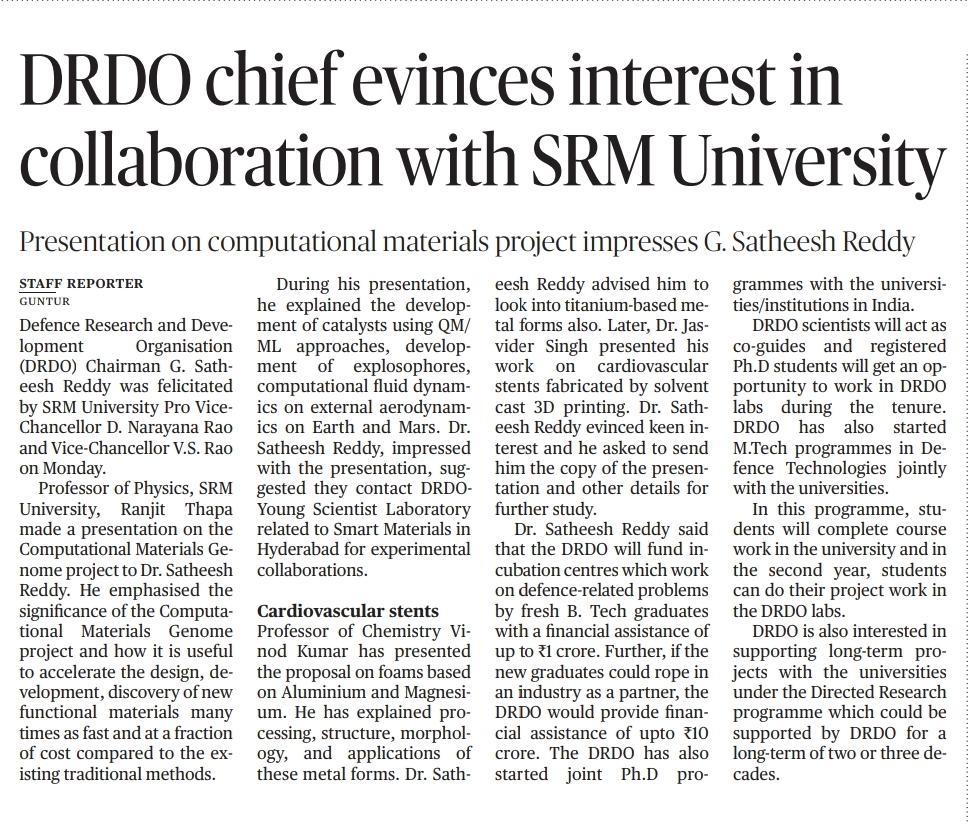
New Indian Express – July 27
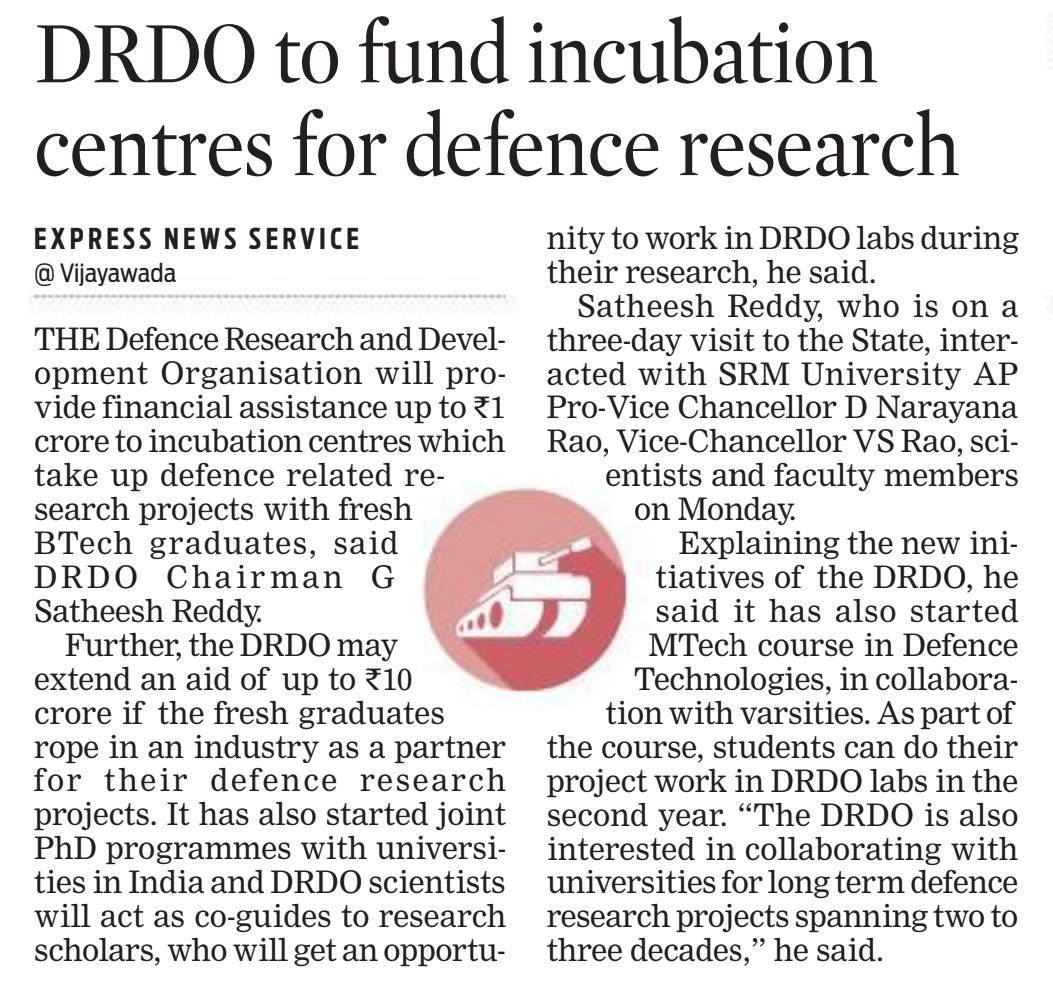
Daily Pioneer – July 27
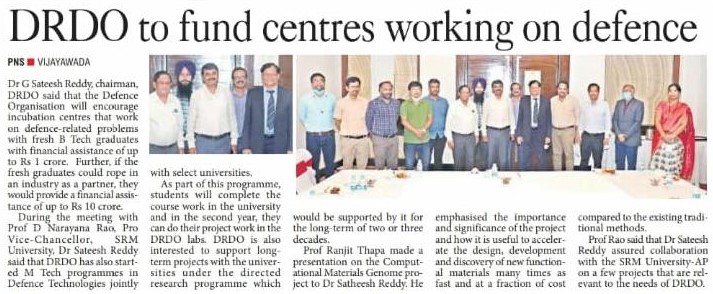
Outlook – July 26

Economic Times – July 26
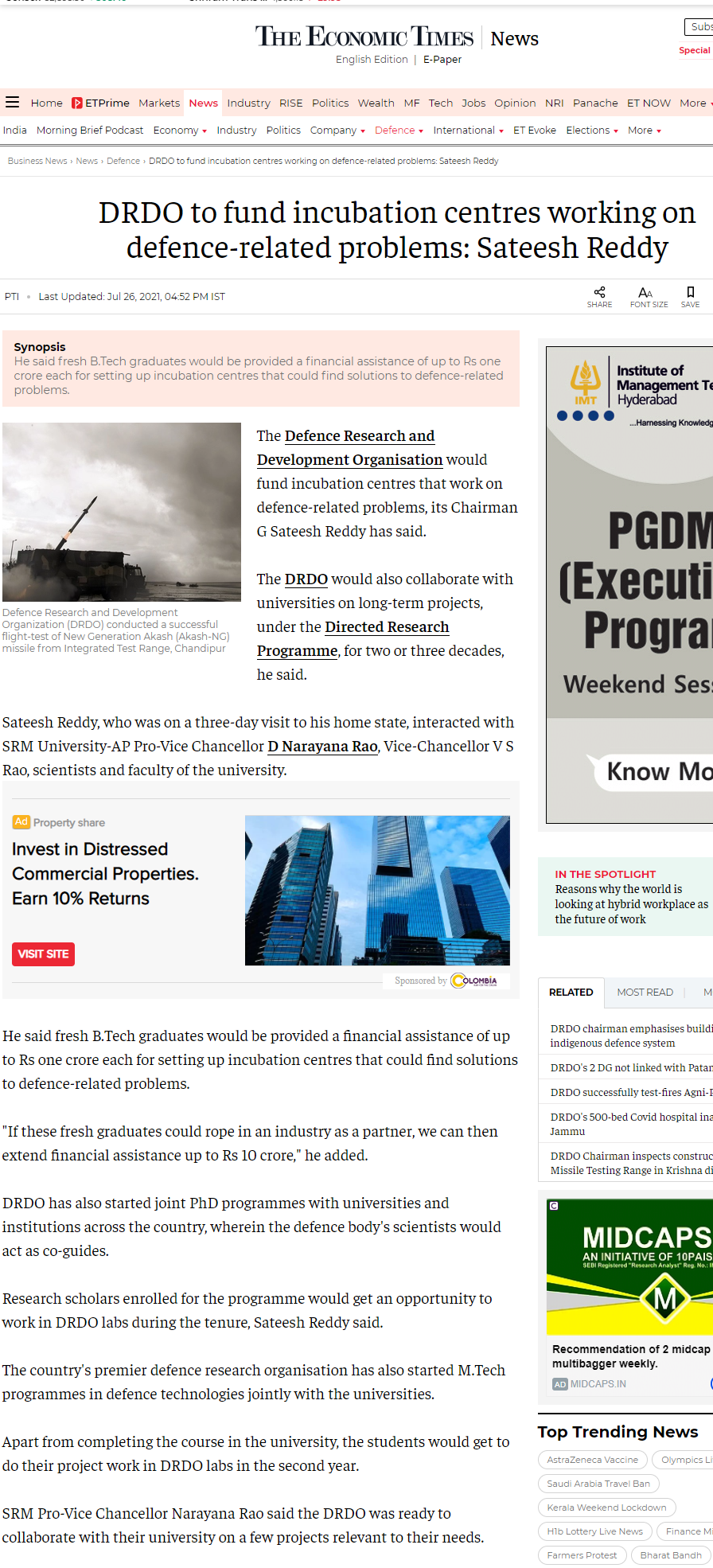
Yahoo India – July 26
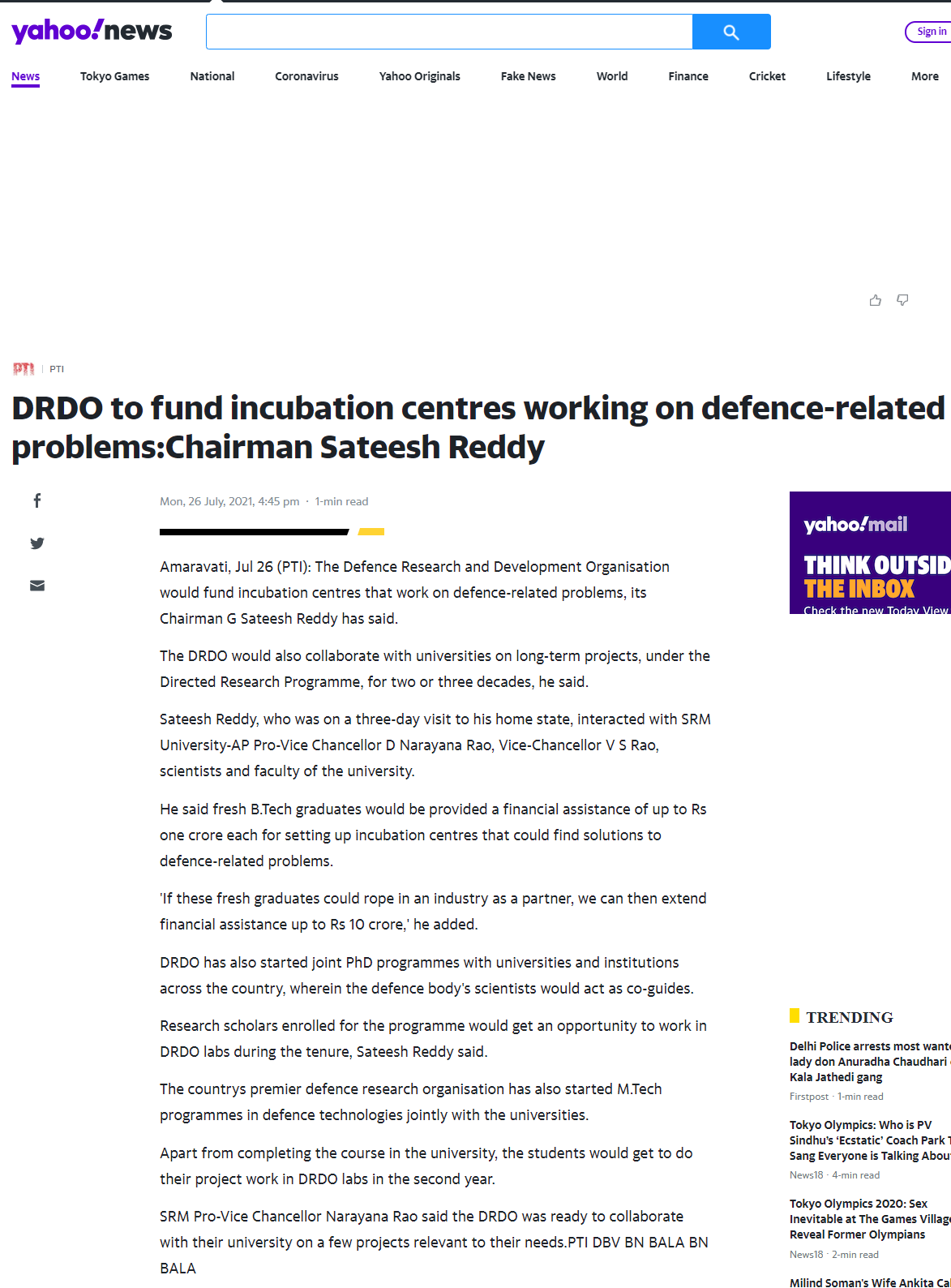
E TV Bharat – July 26
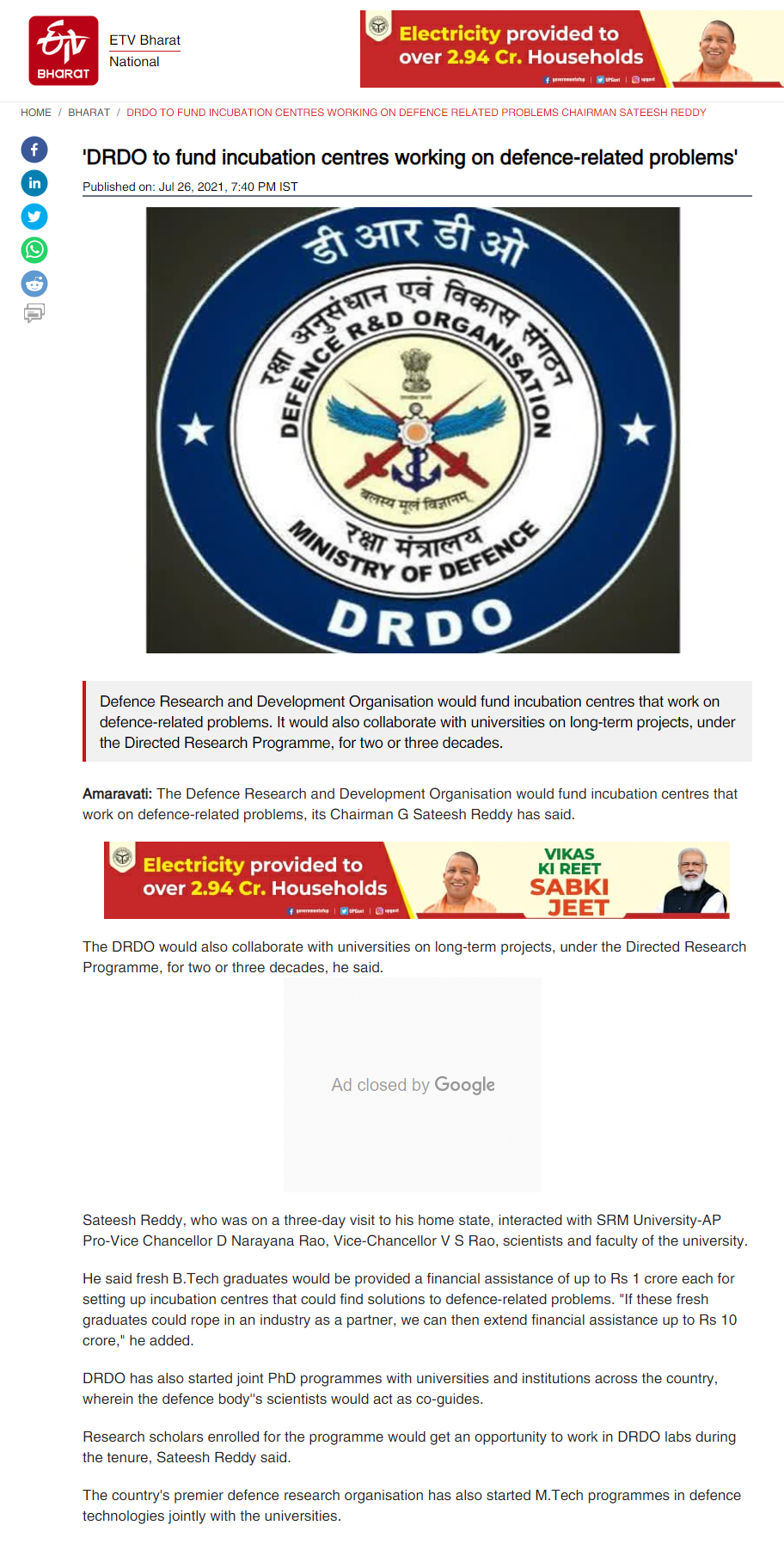
The Greater India – July 26
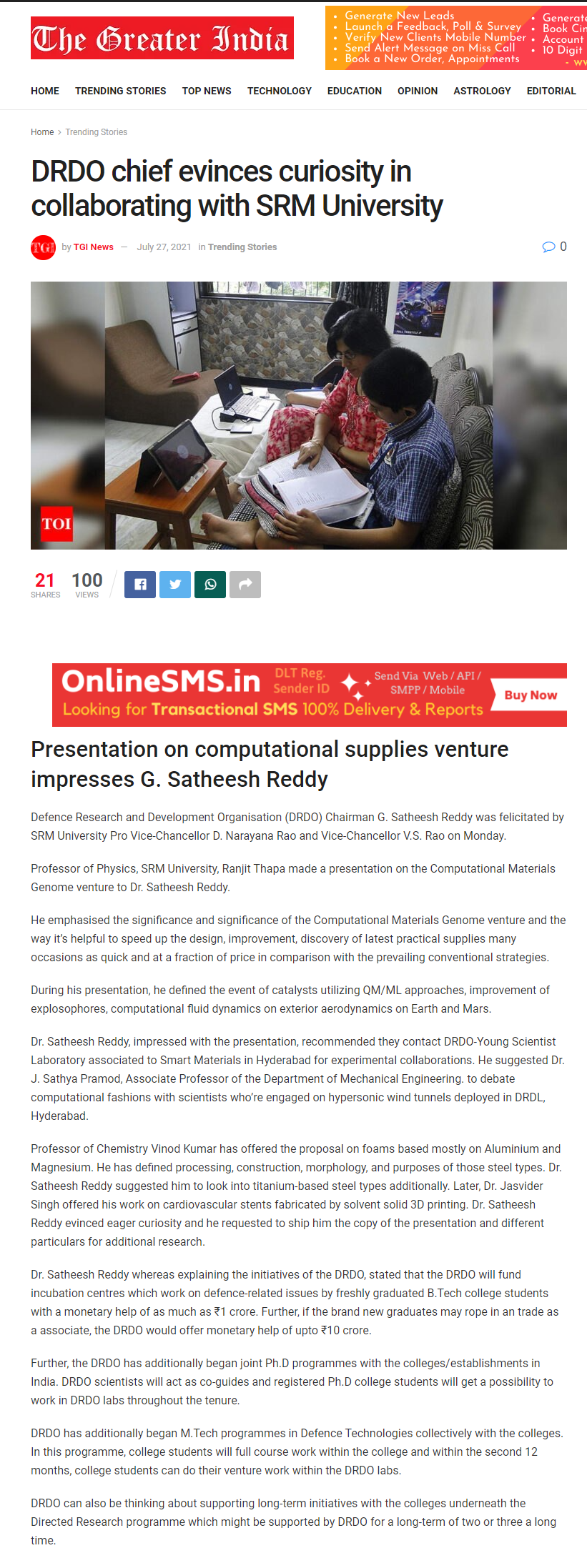
The Hawk – July 26
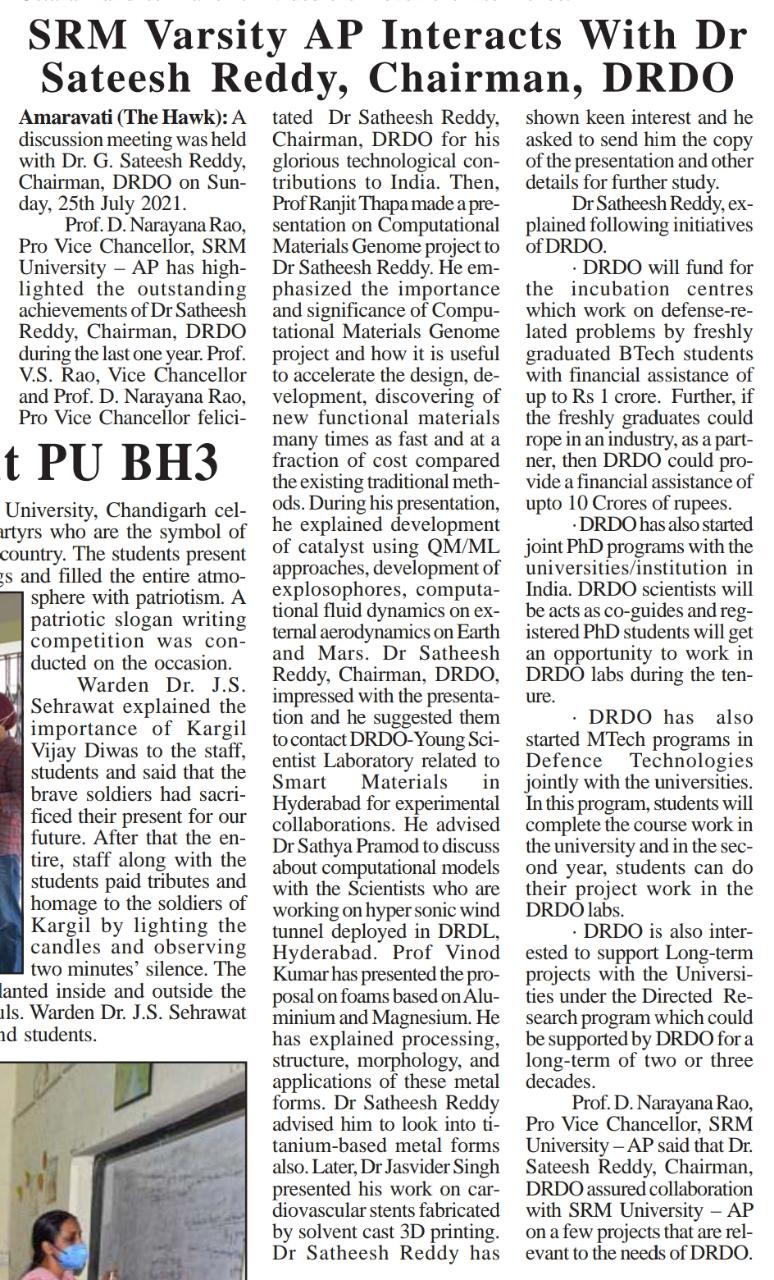
Andhra Prabha – July 27
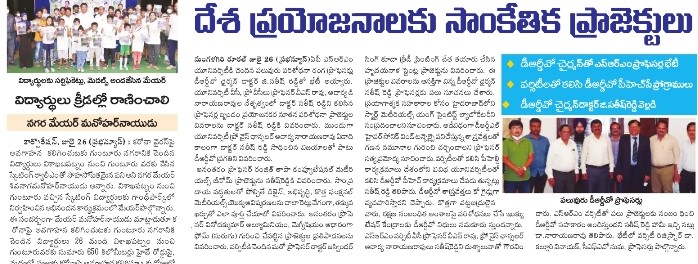
Andhra Jyothi – July 27
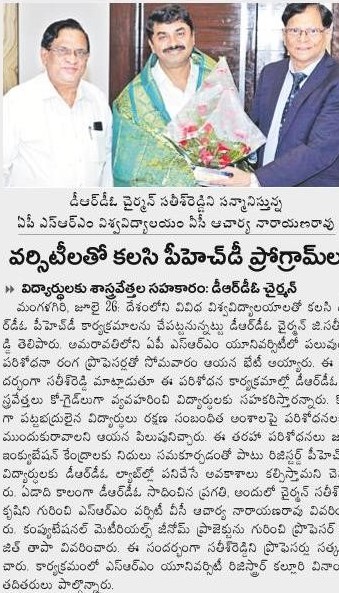
Manam – July 27
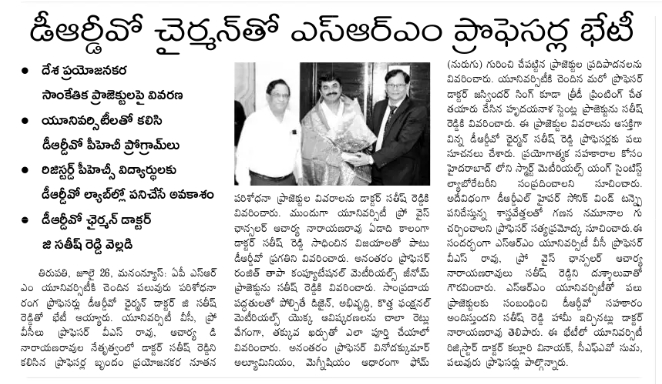
Surya – July 27
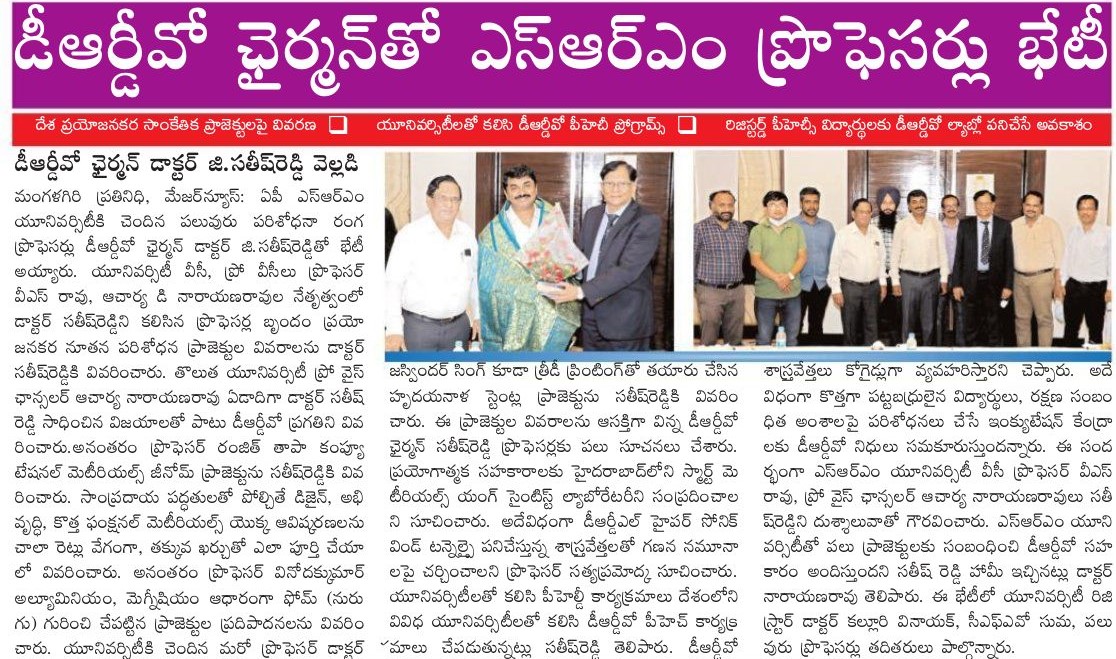
Vaartha – July 27
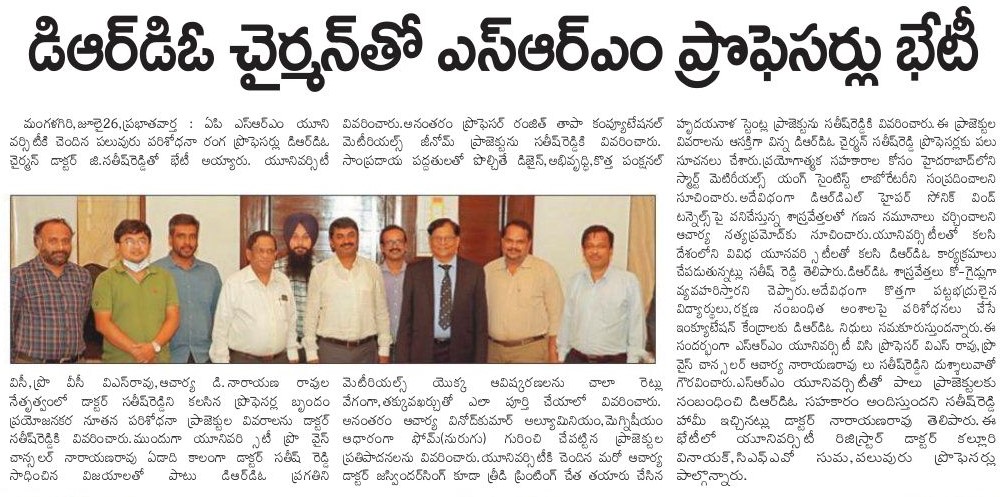
Visalaandhra – July 27
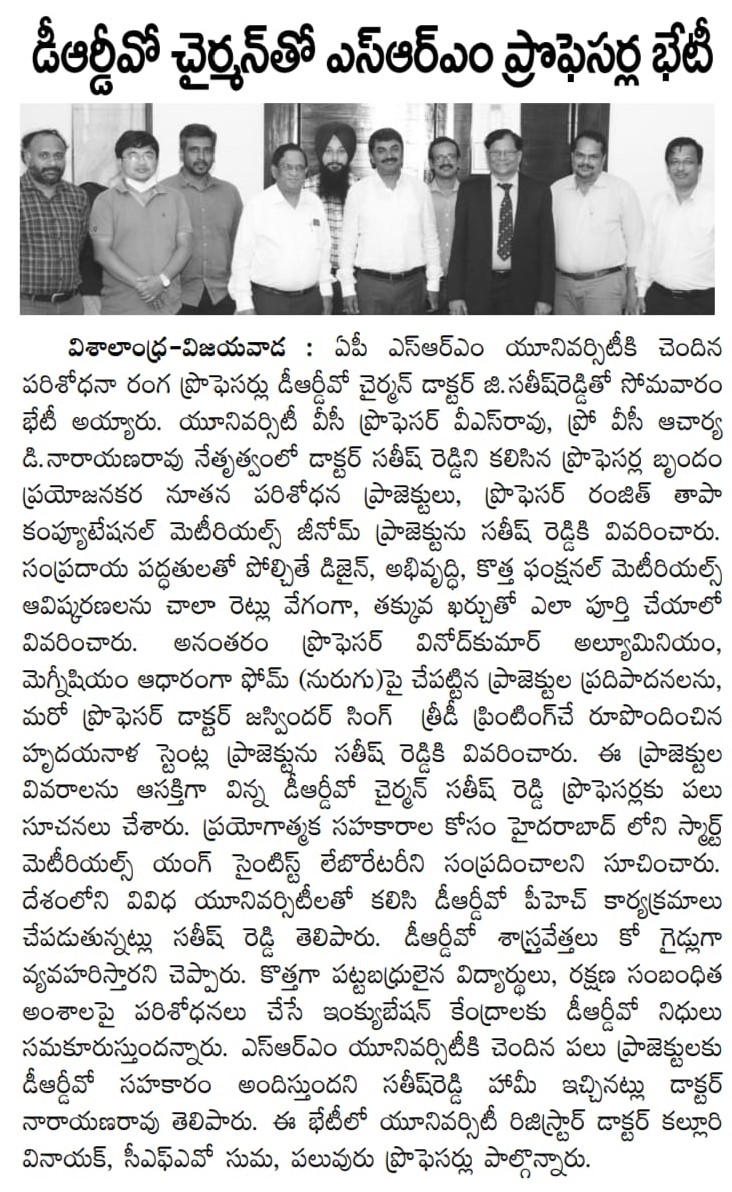
Dainik Arth Parkash – July 27
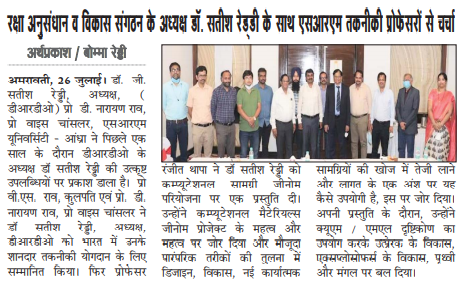
- Published in Newsroom


